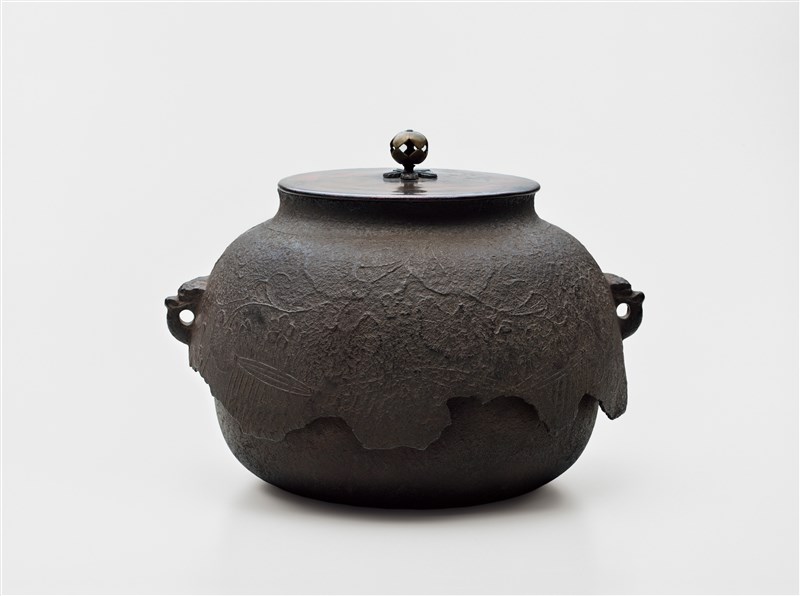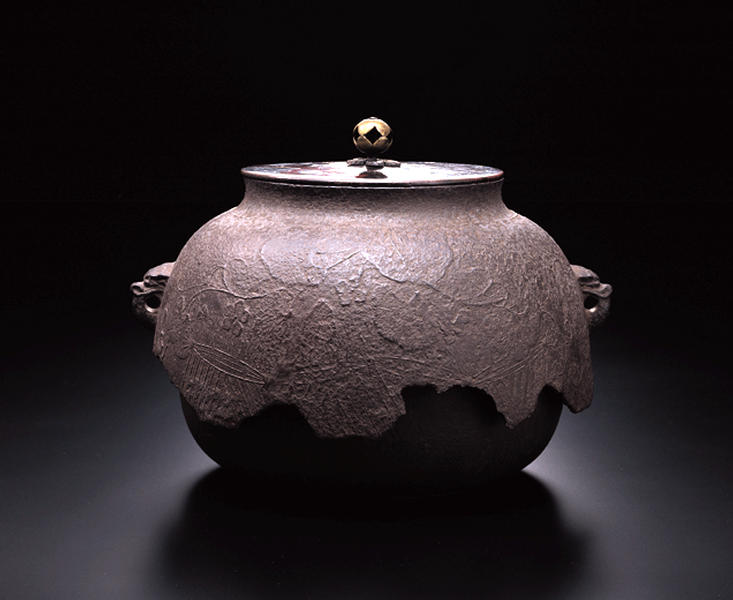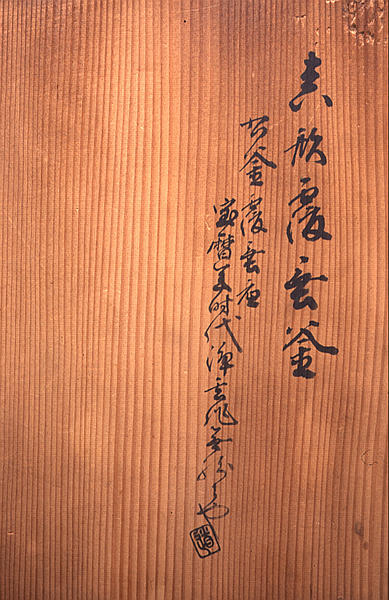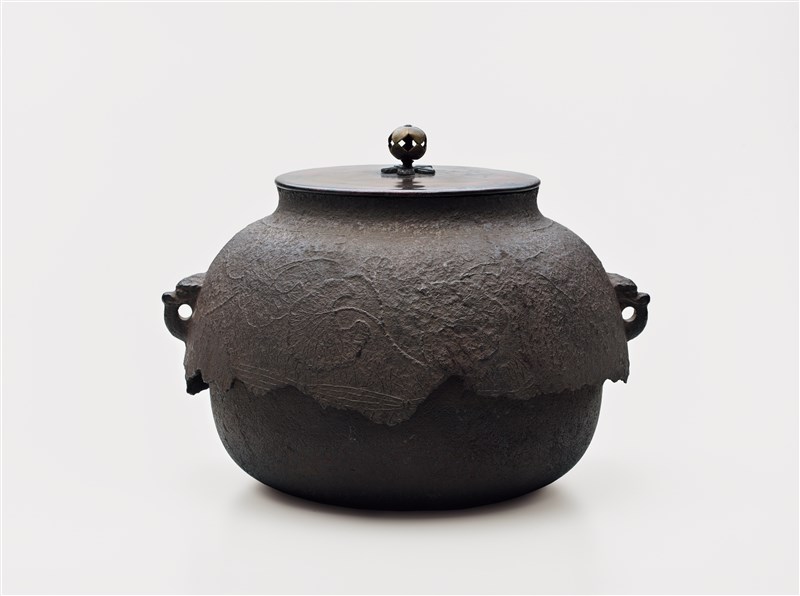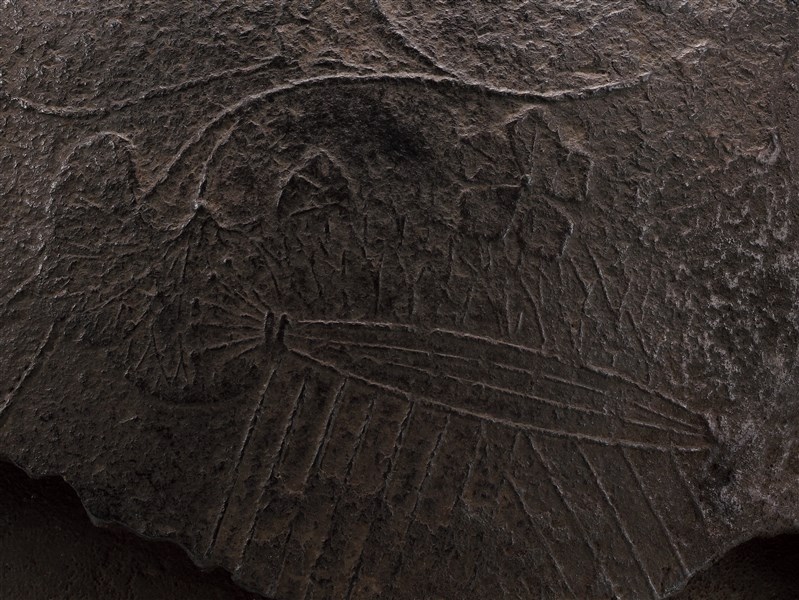Shinnari Kettle with Moonflower Design
- Ashiya, Fukuoka pref.
- Muromachi period, 15th century
- 15th century
- Cast iron
- H-17.5 D-28.3
Catalogue Entry
Muromachi period, 15th century
Ashiya, cast iron
Height, 17.5cm; torso diameter, 28.3cm
The mouth-neck area of this kettle is in the reel shape, and there is a particularly sharp curve at the base of this reel form. The swell from shoulder to waist is expansive, and the two demon mask-shaped handle lugs are placed relatively low, beneath the shoulder of the form. A brushwood fence pattern surrounds the lower edge of the main body, and a delicately undulating line of yugao (evening glory) vines runs along the top of this fence. Originally this was a shin-shaped standard form of kettle, but its base became damaged, and a new base was fitted under the remaining hanging tails of its original lower half. Tea masters of the Edo period highly revered famous kettles, and they sought beauty in this broken-edged form, calling this type of kettle a "hanging tail kettle."
Ashiya kettles were made specifically for the tea ceremony in the Ashiya area at the mouth of the Onga river in present-day Onga gun, Fukuoka prefecture. The shin-shaped, or formal-shaped, kettle is characterized by its regularity of form, vigorously expressed demon-mask handle lugs, and the depiction of decorative motifs on the pithy iron surface. This kettle is a fine example of these characteristics. Compared to the hail-stone ground kettle with plum and bamboo motifs seen in cat. No. 62, there is almost no swell at the shoulders, and the torso forms a round band around the entire structure. These elements show an older style than the plum-bamboo kettle and hence indicate a production in the early Muromachi period. KH
